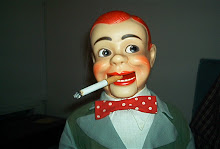different eras-
-the rural Delta blues of Robert Johnson
-the urban Chicago Blues of Muddy Waters
-the hippies blues revival of the 60's and 70's
I know it may be oversimplified, but the biggest
artists arrived during those eras. Alot of the
artists, who never received enough recognition
during the second era, actually were "rediscovered"
during the last era. If anyone wonders why I
haven't mentioned anything after the 70's,
there just wasn't enough kids out there picking
up guitars, or any instruments for that matter.
The late 70's was the birth of hiphop and rap music,
and most kids in the urban community
weren't learning how to play instruments. As for
the rock community, they went towards synthesizers
for most of the 80's.
In my quest to slowly work my way backward,
I wanted to look at someone who was part of
this last wave. Taj Mahal, born Henry
Saint Clair Fredericks May 17, 1942, in
Harlem, NY. He's actually one of the few
contemporaries of the Beatles and the Stones,
age-wise. Unlike most of his elders from the
second wave, he grew up with parents who
were educators as well as musicans. Perhaps
that's why he approached his music with an
adventurous spirit, combining different genres
into his blues- Hawaiian, Latin, Carribbean.
Taj would not let himself be defined.

His first album, "TAJ MAHAL"
(which had Ry Cooder on it) had a
more down-home feel. Slide, harmonica,
but a distinctly rock vibe. After all, this was
1968, and young people were all hip to this
blues revival, being explored by bands like
the Stones, and Clapton. This wasn't the buttoned
up old blues by men like Muddy, and John Lee
Hooker.
The place I discovered Taj was the Rolling Stones
Taj had complete control as a performer.
I was amazed after seeing Rock and Roll Circus, that
Taj didn't pursue a more show-y position in rock'n'roll
He certainly had the charisma, looks, voice.
He definately chose to stay somewhat
behind the songs, and let them do the talking.
This first album, is a bit restrained, I guess he was
still starting from a place that felt safe, and familiar.
Taj showed everybody he could cover the
classics- "Dust My Broom", "Statesboro Blues"
I think what Taj would later understand, on his
journey was, for him to survive
creatively, he would have to look outside of blues
to build up whatever musical vocabulary he could.
That may be the biggest thing for most blues artists
today. How do you keep something alive, that is
close to being a dead language like latin.
Of course, artists like Taj, Buddy Guy
Lucky Peterson manage to make it breathe.
If you make anything too precious, you risk
turning it into a museum piece.
I can personally testify, after having seen him
perform numerous times, how amazing he is live....
far from being a museum piece.
Check out his new grammy-nominated album

